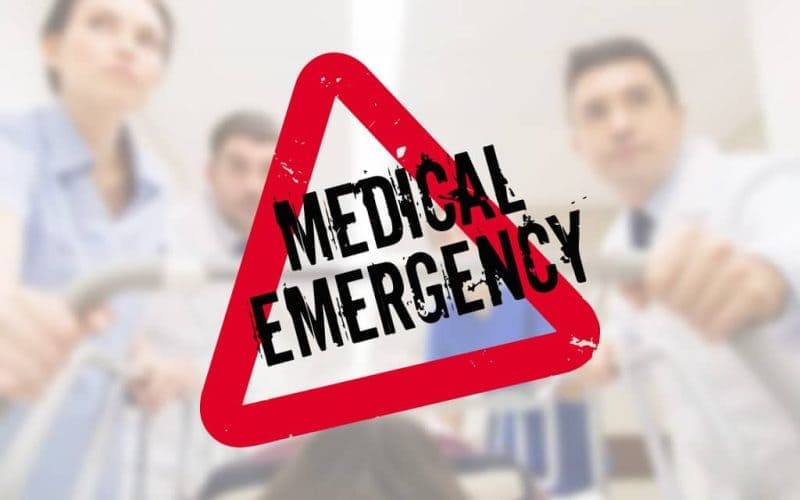What are the symptoms of pulseless ventricular tachycardia?
Pulseless ventricular tachycardia (VT) is a type of ventricular tachycardia that occurs without a detectable pulse, indicating a severe and life-threatening situation. The symptoms and signs of pulseless VT can include:
- Loss of Consciousness: Immediate loss of consciousness or fainting due to inadequate blood flow to the brain.
- Chest Pain: Severe chest pain or discomfort may occur before or during the episode.
- Rapid Heartbeat: A very fast and irregular heartbeat that may not be felt as a pulse.
- Shortness of Breath: Difficulty breathing or shortness of breath may be present.
- Unresponsiveness: The person may be unresponsive or difficult to awaken.
- No Detectable Pulse: The absence of a palpable pulse, which means no blood flow is being effectively pumped out of the heart.
- Cyanosis: Bluish or purplish discoloration of the skin, lips, or extremities due to lack of oxygenated blood.
- Altered Mental Status: Confusion, disorientation, or a decrease in mental clarity due to poor blood flow to the brain.
Pulseless VT is a medical emergency and requires immediate treatment. Cardiopulmonary resuscitation (CPR) and defibrillation are crucial to restore a normal heart rhythm and ensure proper blood flow. If you suspect someone is experiencing pulseless VT, it’s essential to call emergency services right away and begin CPR if trained to do so.
What are the causes of pulseless ventricular tachycardia?
Pulseless ventricular tachycardia (VT) is a severe form of ventricular tachycardia where the heart is beating rapidly but not effectively pumping blood, resulting in no detectable pulse. Causes of pulseless VT can include:
1. Coronary Artery Disease
- Heart Attack: Blockages or narrowing of the coronary arteries can lead to ischemia or damage to the heart muscle, triggering ventricular tachycardia.
2. Heart Failure
- Decompensated Heart Failure: Chronic heart failure or acute worsening of heart failure can lead to the development of ventricular tachycardia.
3. Electrolyte Imbalances
- Abnormal Levels: Imbalances in potassium, magnesium, or calcium levels in the blood can disrupt the electrical activity of the heart and trigger VT.
4. Myocarditis
- Inflammation: Inflammation of the heart muscle due to infections or autoimmune conditions can lead to ventricular tachycardia.
5. Cardiomyopathy
- Heart Muscle Disease: Conditions such as dilated cardiomyopathy or hypertrophic cardiomyopathy can increase the risk of ventricular tachycardia.
6. Structural Heart Abnormalities
- Congenital Defects: Heart defects present from birth, such as abnormal pathways or valves, can predispose individuals to VT.
7. Drug Toxicity or Overdose
- Medications: Certain drugs, including antiarrhythmics or illicit substances, can provoke VT.
8. Ischemia or Infarction
- Reduced Blood Flow: Areas of the heart muscle that are not receiving enough blood (ischemia) or have undergone infarction can become electrically unstable and lead to VT.
9. Arrhythmogenic Right Ventricular Dysplasia (ARVD)
- Genetic Condition: A rare condition characterized by the replacement of heart muscle with fatty or fibrous tissue, leading to arrhythmias.
10. Severe Hypoxia or Hypovolemia
- Oxygen Deprivation: Severe lack of oxygen in the blood or significant loss of blood volume can affect heart rhythm and lead to VT.
11. Post-Cardiac Surgery or Intervention
- Surgical Complications: Ventricular tachycardia may occur following heart surgery or other invasive cardiac procedures.
12. Idiopathic Causes
- Unidentified Triggers: In some cases, the exact cause of pulseless VT may not be clear.
Pulseless VT is a critical condition that requires immediate medical intervention. Identifying and treating the underlying cause is essential to prevent recurrence and manage the condition effectively.
What is the treatment for pulseless ventricular tachycardia?
The treatment for pulseless ventricular tachycardia (VT) is an emergency medical situation that requires immediate action. The primary goal is to restore effective heart rhythm and blood circulation. The standard approach includes:
1. Cardiopulmonary Resuscitation (CPR)
- Immediate Action: Begin CPR as soon as possible if the person is unresponsive and not breathing normally. This helps maintain blood flow to vital organs until advanced medical help arrives.
2. Defibrillation
- Use of AED: Apply an Automated External Defibrillator (AED) if available. Defibrillation is critical for restoring a normal heart rhythm and is often required to treat pulseless VT.
3. Advanced Cardiac Life Support (ACLS)
- Medical Intervention: In a hospital setting, advanced treatments may be administered by healthcare professionals, including:
- Antiarrhythmic Medications: Drugs such as amiodarone or lidocaine may be used to help stabilize the heart rhythm.
- Vasopressors: Medications like epinephrine can be administered to improve blood flow and support the heart’s function.
4. Addressing Underlying Causes
- Identifying and Treating Causes: Once the patient is stabilized, it is crucial to identify and address any underlying conditions that contributed to the VT, such as coronary artery disease, electrolyte imbalances, or heart failure.
5. Post-Resuscitation Care
- Monitoring and Support: After initial treatment, the patient will require continuous monitoring and supportive care in a hospital setting. This may include managing any complications, performing additional diagnostic tests, and providing appropriate therapies.
6. Implantable Devices
- Long-Term Management: In some cases, long-term management may involve implanting a device such as an implantable cardioverter-defibrillator (ICD) to prevent future episodes of VT.
Immediate and effective treatment of pulseless ventricular tachycardia is essential to improve outcomes and prevent complications. If you suspect someone is experiencing this condition, call emergency services and initiate CPR if trained to do so.

Leave a Reply
You must be logged in to post a comment.